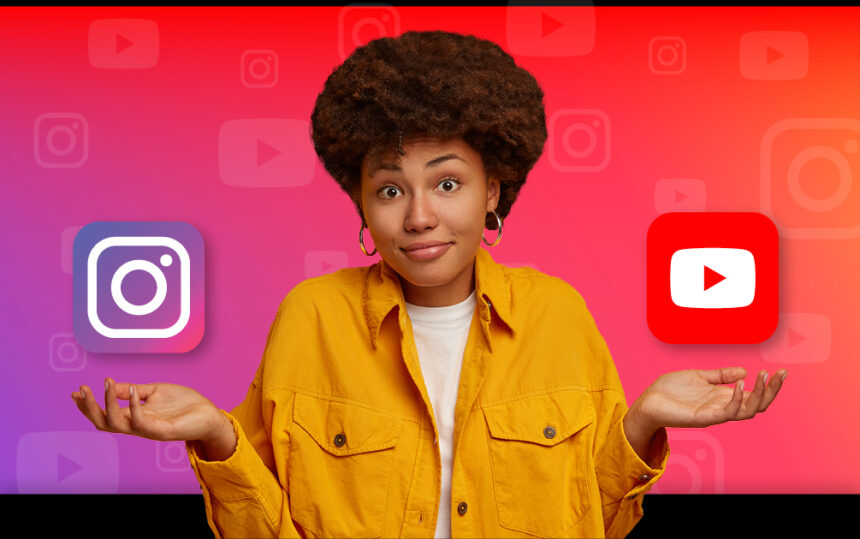YouTube Shorts and Instagram Reels have become popular platforms for creating and sharing short-form videos. While both serve the purpose of engaging audiences with bite-sized content, they have unique features and target different audiences. Understanding the difference between YouTube Shorts and Instagram Reels can help creators and businesses leverage these platforms effectively.
Related: Funfactnook YouTube Shorts
Purpose and Audience of YouTube Shorts and Instagram Reels
YouTube Shorts is integrated into the YouTube app, targeting a broad audience interested in consuming and creating short videos within the YouTube ecosystem. On the other hand, Instagram Reels is part of the Instagram app, catering to users who prefer the Instagram platform for content creation and consumption.
Features of YouTube Shorts
Short Video Format
YouTube Shorts allows users to create videos of up to 60 seconds, ideal for capturing attention with concise and impactful content.
Music and Audio Integration
Creators can add music from a wide range of licensed tracks and sound effects to enhance the audiovisual experience of their Shorts.
Creative Tools
YouTube Shorts provides a variety of creative tools, including speed controls, filters, and text overlays, to customize and enhance videos.
Community Engagement
With features like likes, comments, and sharing, YouTube Shorts encourages community interaction and engagement.
Features of Instagram Reels
Short Video Format
Instagram Reels also supports short videos, with a maximum length of 60 seconds, suitable for quick and engaging content.
Music and Audio Integration
Similar to YouTube Shorts, Instagram Reels offers a vast library of music and audio tracks for users to enhance their videos.
Creative Tools
Instagram Reels provides creative tools like AR effects, timers, countdowns, and align to help creators produce high-quality content.
Community Engagement
Users can engage with Instagram Reels through likes, comments, and sharing, fostering a sense of community and interaction.
YouTube Shorts vs. Instagram Reels: A Battle of Bite-Sized Content
The world of social media is constantly evolving, and short-form video content reigns supreme. Two major players in this arena are YouTube Shorts and Instagram Reels, both vying for viewers’ attention with their bite-sized entertainment. But which platform is right for you? Let’s delve into the key differences between these video powerhouses:
Platform Focus:
| Feature | YouTube Shorts | Instagram Reels |
|---|---|---|
| Main Platform | Video-sharing platform with diverse content | Photo and video-sharing platform with a focus on visual aesthetics |
| Target Audience | Diverse, with an emphasis on Gen Z and Millennials | Younger demographics, primarily Gen Z and some Millennials |
Video Specs:
| Feature | YouTube Shorts | Instagram Reels |
|---|---|---|
| Video Length | 1-60 seconds | 15-90 seconds |
| Aspect Ratio | Primarily portrait (vertical), landscape-supported | Primarily portrait (vertical), landscape supported |
| Music Library | Large library of licensed music | Large library of licensed music and trending sounds |
| Editing Tools | Basic editing tools provided within the app | There is a wide range of editing tools within the app, including effects, stickers, and polls. |
Monetization:
| Feature | YouTube Shorts | Instagram Reels |
|---|---|---|
| Eligibility | Creators in the YouTube Partner Program | Currently no direct monetization available |
| Revenue Sharing | Revenue generated through ads shared with creators | Not applicable |
Strengths & Weaknesses:
| Feature | YouTube Shorts | Instagram Reels |
|---|---|---|
| Strengths | Larger potential reach, discoverability on YouTube main page | More diverse editing tools, strong community engagement |
| Weaknesses | Limited editing tools, newer platform with smaller audience | No direct monetization, focus on virality may limit content depth |
Choosing the Right Platform:
Deciding between YouTube Shorts and Instagram Reels depends on your goals and target audience. If you prioritize reach and potential monetization, YouTube Shorts offers a larger platform and future revenue opportunities. However, if you favor engaging editing tools, community interaction, and a younger audience, Instagram Reels might be your best bet.
Experiment on both platforms to see which resonates better with your content and audience. Remember, short-form video is a powerful tool, and mastering its nuances can unlock significant engagement and growth in the digital age.
Differences in Video Length
One of the primary differences between YouTube Shorts and Instagram Reels is the maximum video length allowed. While both platforms support short videos, YouTube Shorts allows for up to 60 seconds, whereas Instagram Reels also has a maximum duration of 60 seconds.
Editing and Creative Tools Comparison
Both platforms offer a range of editing and creative tools to enhance videos. However, the specific tools and features may vary, with YouTube Shorts focusing on simplicity and ease of use within the YouTube app, while Instagram Reels provides more advanced editing options integrated into the Instagram app.
Music and Audio Integration
Both YouTube Shorts and Instagram Reels provide extensive music and audio libraries for users to add background music and sound effects to their videos. However, the selection of tracks and licensing agreements may differ between the two platforms.
Audience and Reach
The audience demographics and reach of YouTube Shorts and Instagram Reels may vary based on the platforms they are integrated into. YouTube Shorts may appeal to a broader audience due to its association with the YouTube platform, while Instagram Reels may attract users who are already active on Instagram.
Monetization Opportunities
YouTube Shorts offers monetization opportunities through the YouTube Partner Program, allowing creators to earn revenue from their Shorts. Instagram Reels, on the other hand, does not currently offer direct monetization options for creators.
Engagement and Interaction
Both platforms prioritize user engagement and interaction through features like likes, comments, and sharing. However, the user experience and interface for engaging with content may differ based on the platform’s design and layout.
Marketing and Branding
For businesses and creators looking to market their products or build their brand, both YouTube Shorts and Instagram Reels offer opportunities to reach a wide audience. The choice between the platforms may depend on the target audience and the nature of the content being promoted.
User Experience and Interface
The user experience and interface of YouTube Shorts and Instagram Reels are designed to be intuitive and user-friendly, with a focus on seamless navigation and content discovery. However, the specific layout and design elements may differ based on the platform’s overall branding and aesthetic.
Algorithm and Discovery
Both platforms use algorithms to recommend content to users based on their interests and engagement history. Understanding the nuances of each platform’s algorithm can help creators optimize their content for maximum visibility and reach.
Final Thoughts
YouTube Shorts and Instagram Reels are both valuable platforms for creating and sharing short-form videos. While they share some similarities in terms of video length and features, they cater to different audiences and offer unique opportunities for content creators and businesses. By understanding the differences between YouTube Shorts and Instagram Reels, creators can effectively leverage these platforms to reach their target audience and engage with their followers.
Related: Compare and Contrast Superman and Batman: An In-Depth Comparison
FAQs about YouTube Shorts and Instagram Reels
Can I use the same video on both YouTube Shorts and Instagram Reels?
Yes, you can create a video and share it on both platforms to reach different audiences.
Which platform is better for monetization, YouTube Shorts, or Instagram Reels?
YouTube Shorts currently offers more direct monetization options for creators through the YouTube Partner Program.
Are there any limitations on the type of content I can post on YouTube Shorts and Instagram Reels?
Both platforms have community guidelines that outline the types of content that are not allowed.
Can I schedule posts on YouTube Shorts and Instagram Reels?
Instagram Reels allows you to schedule posts using Creator Studio, while YouTube Shorts does not currently have this feature.
How can I track the performance of my videos on YouTube Shorts and Instagram Reels?
Both platforms provide analytics tools that allow you to track metrics like views, engagement, and audience demographics.





